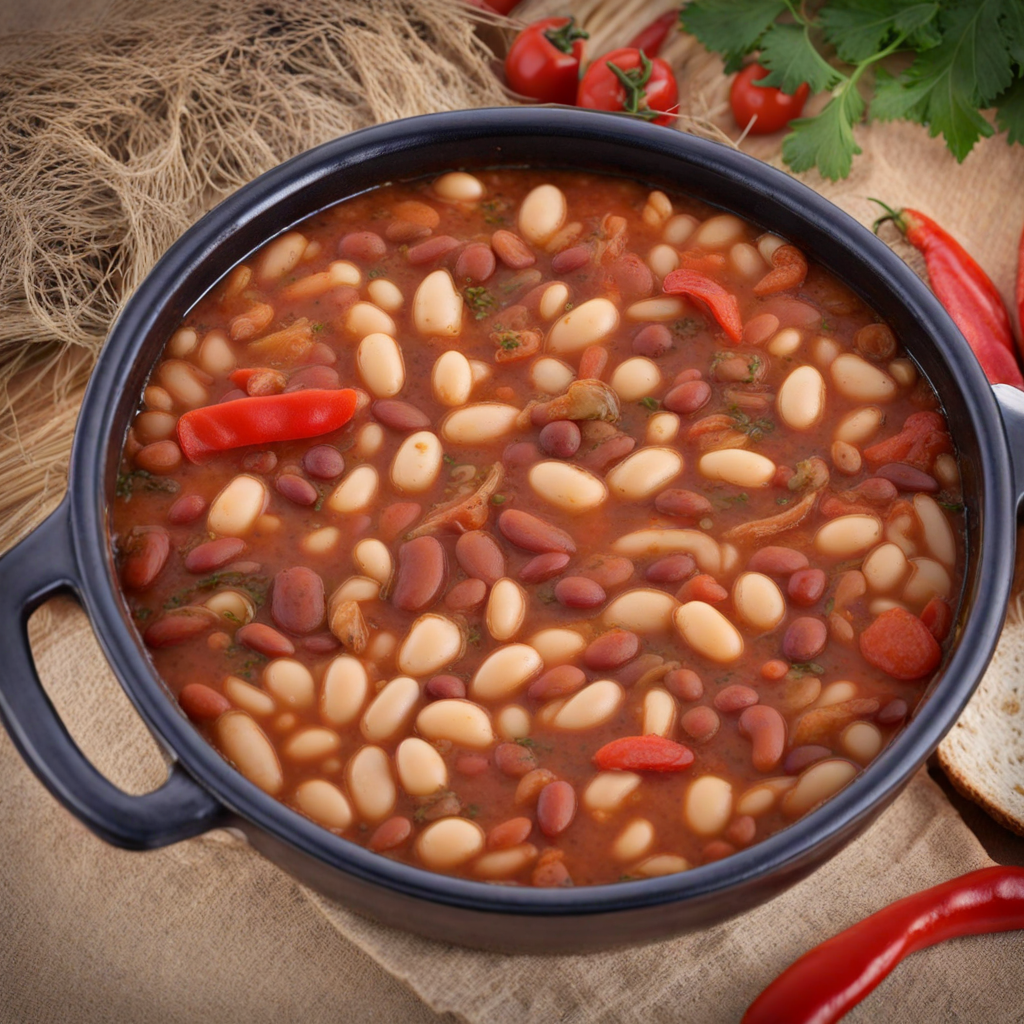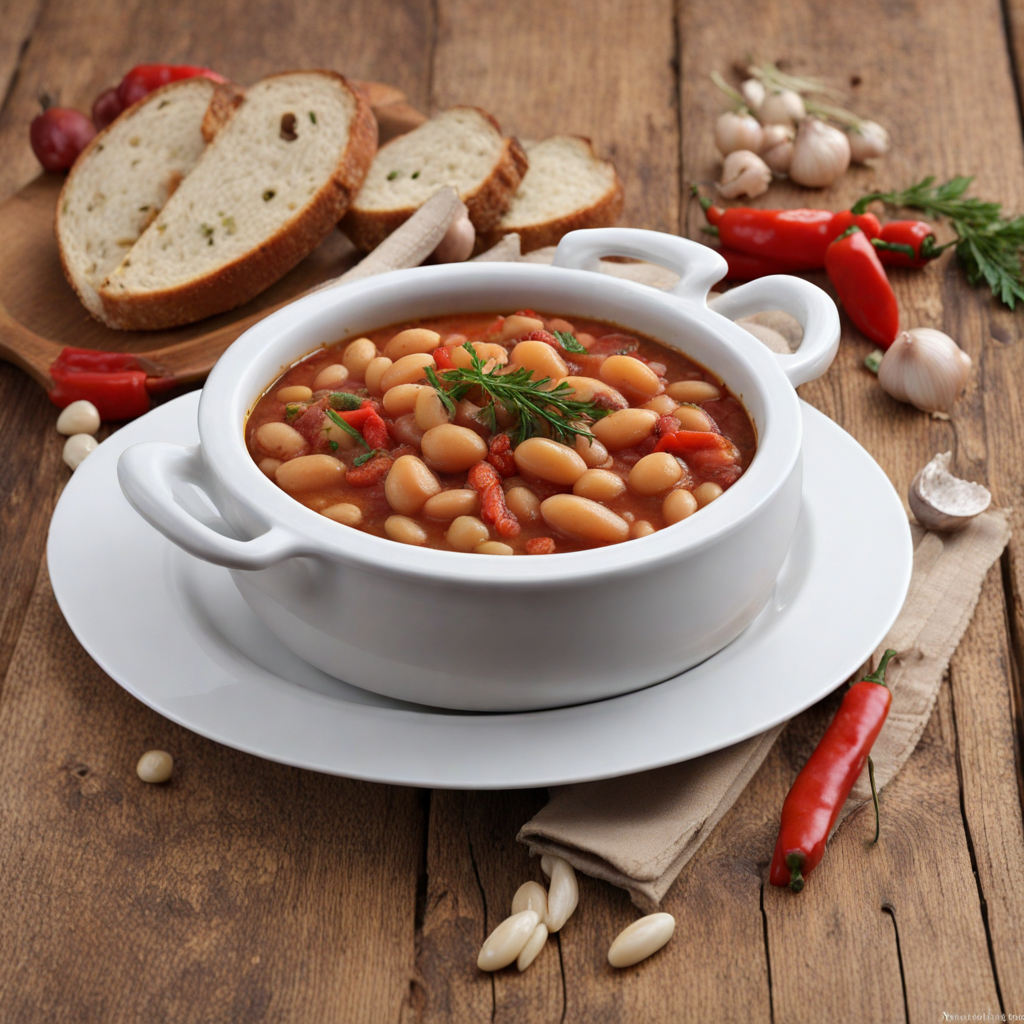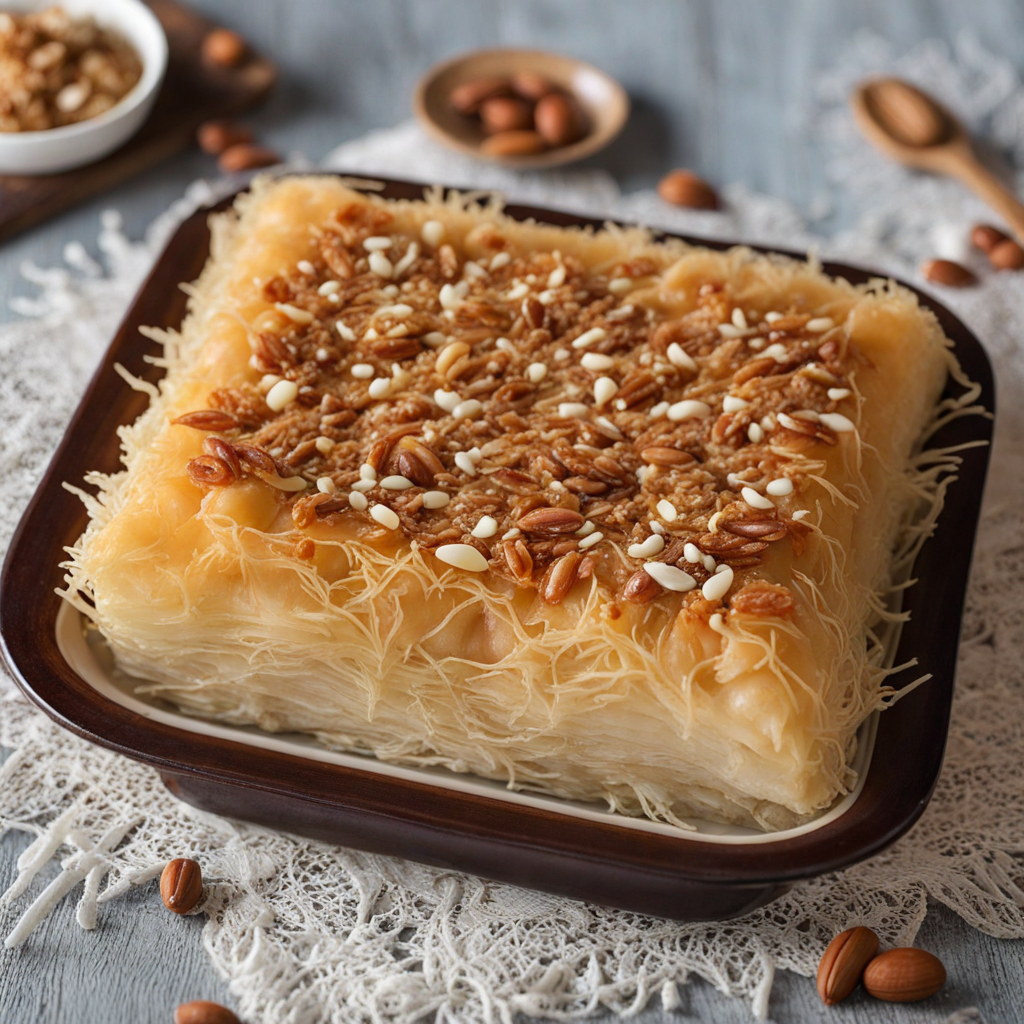Tavče Gravče
Тавче Гравче, a celebrated dish from North Macedonia, embodies the rich culinary traditions of the Balkan region. This hearty bean stew is not just a staple of Macedonian cuisine but also a dish that resonates with cultural significance and historical roots. Traditionally prepared in a clay pot, from which it derives its name—Тавче means "pan" or "pot" in Macedonian, and Гравче translates to "beans"—it reflects the rural lifestyle and communal dining practices of the region. The history of Тавче Гравче dates back centuries, with its origins closely tied to the agricultural practices of the Balkan people. Beans, a key ingredient, have been cultivated in the region since ancient times. This dish is often associated with family gatherings and celebrations, symbolizing warmth, hospitality, and the rich agricultural heritage of North Macedonia. Throughout history, it has been a comfort food, often served during cold winters or festive occasions. Each household may have its own version, passed down through generations, leading to a delightful variety of interpretations. The flavor profile of Тавче Гравче is characterized by its robust and savory notes. The dish is typically made using white or yellow beans, which provide a creamy texture once cooked. The beans are simmered with a medley of ingredients that enhance their natural earthiness. Commonly included are onions, garlic, and a blend of spices such as paprika, black pepper, and sometimes bay leaves. The addition of sweet red pepper and tomatoes
How It Became This Dish
The History of Тавче Гравче: A Culinary Gem of North Macedonia Tavče Gravče, a beloved dish from North Macedonia, is much more than just a meal; it is a vibrant reflection of the region's cultural heritage, agricultural practices, and communal values. This hearty bean dish, traditionally cooked in a clay pot, has evolved over centuries, embodying the essence of the Macedonian way of life. #### Origins and Ingredients The roots of Tavče Gravče can be traced back to the early settlements in the Balkan Peninsula. Beans have been a staple in the region's diet for millennia, primarily due to their accessibility and nutritional value. Archaeological evidence suggests that domesticated beans were cultivated in the area as early as the Neolithic period. The legume's adaptability to the Mediterranean climate made it a favored crop among early Macedonian farmers. At its core, Tavče Gravče is a simple dish composed of white beans, often known as "Macedonian beans" or "pinto beans," which are simmered with a medley of ingredients such as onions, peppers, tomatoes, and a generous sprinkle of paprika. The dish is unique due to its cooking method; it is traditionally prepared in a shallow, earthenware pot called a "tavče." This cooking vessel not only retains heat but also infuses the dish with a distinct earthy flavor, which enhances the overall experience. #### Cultural Significance Tavče Gravče holds a special place in Macedonian culture, serving as a symbol of hospitality and communal spirit. It is often prepared for family gatherings, celebrations, and festivals, embodying the notion of sharing and togetherness. The dish is commonly associated with the Orthodox Christian tradition, particularly during Lent, when many families abstain from meat and indulge in plant-based meals. The preparation of Tavče Gravče is often a communal activity, bringing families and friends together in the kitchen. Traditionally, women would gather to cook the dish, sharing stories and laughter as they prepared the ingredients. This practice not only fosters a sense of community but also allows for the transmission of culinary knowledge and traditions across generations. It is not uncommon for each family to have its unique twist on the recipe, passed down through the years, creating a rich tapestry of flavors and techniques. #### Regional Variations and Influences As North Macedonia is located at a crossroads of various cultures and civilizations, Tavče Gravče has absorbed diverse influences over time. The Ottoman Empire's long-standing presence in the Balkans introduced new spices and cooking techniques, which have been integrated into the dish. The use of paprika, for instance, reflects the influence of Ottoman culinary traditions, while the addition of various vegetables showcases the agricultural diversity of the region. In different regions of North Macedonia, variations of Tavče Gravče can be found. For example, in the mountainous areas, you might encounter a heartier version that includes smoked meats, while in the urban centers, the dish may be prepared with a lighter touch, focusing on the purity of the beans and vegetables. Despite these regional adaptations, the core elements of Tavče Gravče remain consistent, highlighting the dish's adaptability and enduring popularity. #### Modern Development In recent years, Tavče Gravče has experienced a renaissance, with chefs and food enthusiasts reimagining this traditional dish in contemporary culinary contexts. As North Macedonia has embraced its rich gastronomic heritage, Tavče Gravče has gained recognition beyond the borders of the country. Food festivals and culinary fairs celebrate this dish, showcasing its versatility and appeal to a wider audience. The rise of the farm-to-table movement has also breathed new life into the preparation of Tavče Gravče. Many chefs now emphasize the importance of using locally sourced, organic ingredients, which enhances the dish's flavor and supports local farmers. This trend aligns with a growing interest in sustainable practices and the promotion of traditional Macedonian cuisine on the international stage. Furthermore, the advent of social media has allowed home cooks and professional chefs alike to share their interpretations of Tavče Gravče with a global audience. Recipes, cooking videos, and photographs of this iconic dish flood platforms like Instagram and TikTok, sparking interest and curiosity among food lovers worldwide. The vibrant imagery and storytelling surrounding Tavče Gravče are helping to preserve its legacy while simultaneously inviting new generations to explore its flavors. #### Conclusion Tavče Gravče is more than just a nourishing bean dish; it is a symbol of North Macedonia's rich cultural heritage and communal values. From its ancient origins rooted in agricultural practices to its modern-day interpretations, this dish continues to evolve while maintaining its essence. As North Macedonia asserts its identity on the culinary map, Tavče Gravče stands as a testament to the power of food to bring people together, preserve traditions, and celebrate the land. In every spoonful of this hearty dish lies a story—one of resilience, community, and love for the land. Whether enjoyed at a family gathering, a festive celebration, or a quiet evening at home, Tavče Gravče remains a cherished part of North Macedonia's culinary landscape, inviting all who partake to savor its rich history and vibrant flavors.
You may like
Discover local flavors from North Macedonia







